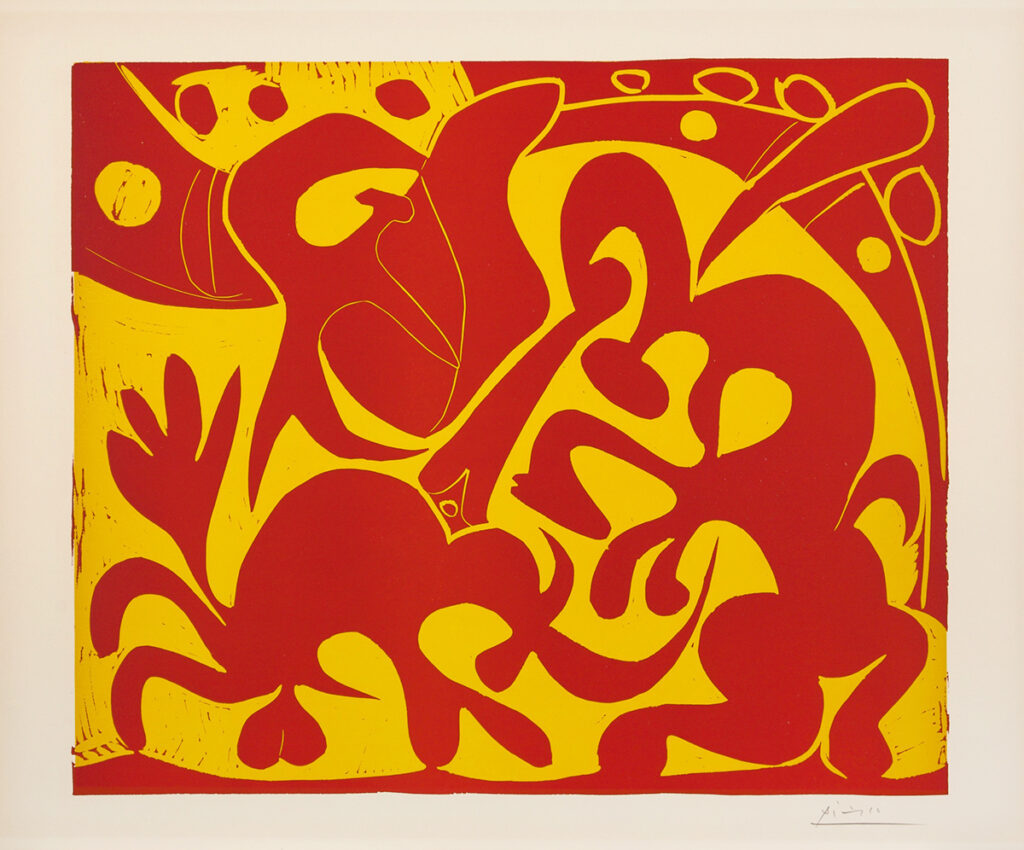
Highly saturated swirls of crimson red and amber yellow dance across the page of Bloch 908 like paint swirls. These abstracted figures before us are, in fact, telling the story of a bullfight. The majority of the bullfighting scenes we’ve looked at together focus on the dynamic between the bull and the matador. But Picasso was captivated by every aspect of bullfighting.* A true Spaniard and an artist from birth, Picasso had depicted variations on bull fight scenes since he was a precocious boy, including an oil painting of the picador from 1889, created when he was just 8 years old. The picador’s role is to assist the matador on horseback.** At an early stage in the fight, the picador uses his pike, or lance, to stab the bull in the shoulders to weaken him. However, it’s important that the picador doesn’t display too much strength over the bull, or the beast might be too docile to participate in a lively show for the audience. Viewers have been known to boo or heckle a domineering picador for this very reason. His role in the “opening act” of the bull fight requires restraint, and even as he delivers his final jab, it must be done delicately. This is the exact moment we see in Bloch 908.
Normally the star of the show, here the matador has been relocated to the background where he drapes his muleta, the red cape used to fire up the bull. In this print, red isn’t just reserved for the muleta. The bloody shade dominates this linocut, evoking the spectacular act of violence taking place and uniting the bull, his enemies, and those who have gathered to watch his downfall in the same shade. In this way, we can view the color and shapes as working together to create a sense of fluidity. The figures move as one while the print vibrates with the sounds, smells, and textures of the entire bullfight itself just through Picasso’s choice of color. This scene’s cinematic framing zooms in on the role of the picador above all else. It’s as though the rest of the world is a mere blur behind him. Even the audience’s presence is not visually prominent; they recede into the deep background, behind the lesser showcased matador. Considering the intense spectatorship of a bullfight, this seems like a strongly deliberate choice from Picasso. Perhaps the story told here is one of a picador who has become so enraptured in his dance with the bull that he has forgotten anything else that exists around him.
Courtesy of John Szoke Gallery, New York.
